Art & Exhibitions
‘The New Tower of Babel Is A.I.’: Artist Tu Hongtao Makes His New York Debut
His new show, at Lévy Gorvy Dayan, results from reflections on issues like technology and social control.
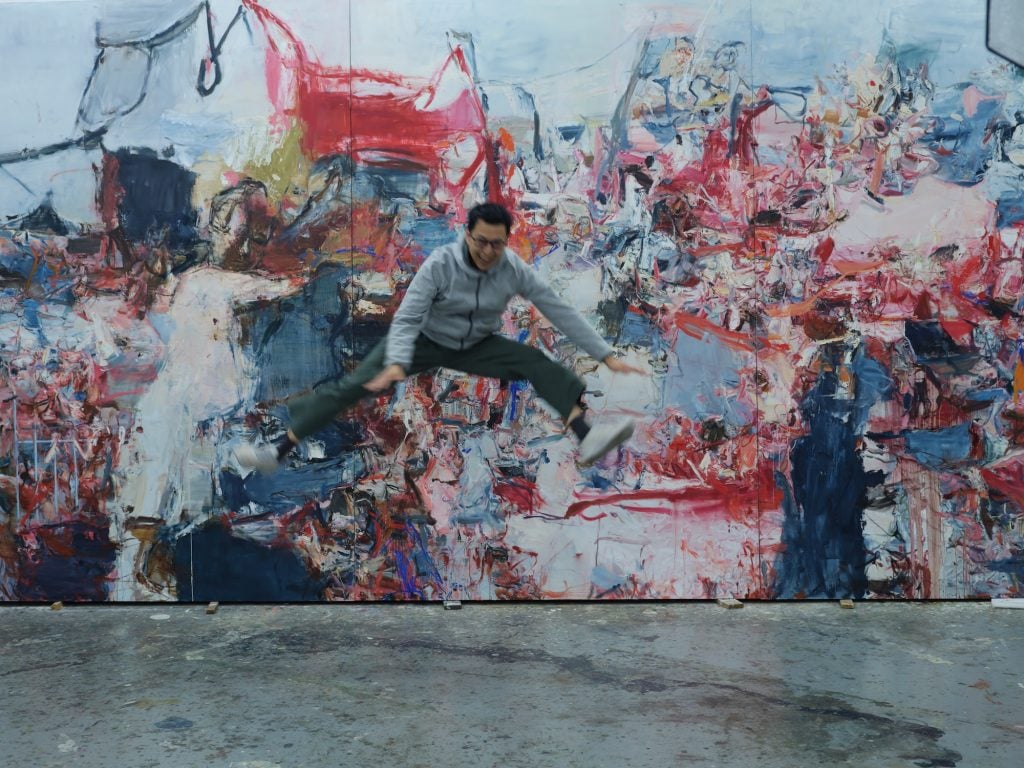
His new show, at Lévy Gorvy Dayan, results from reflections on issues like technology and social control.

Leo Yuan

Born in 1976, in the year of the dragon according to the Chinese zodiac, artist Tu Hongtao welcomes the fifth dragon year of his life with an exhibition at Lévy Gorvy Dayan, making his New York debut.
Best known for his visceral portrayal of dense cityscapes packed with bodies, Tu Hongtao developed his distinctive style in the early 2000s, following a brief stint in the clothing business in Guangdong Province, where he witnessed firsthand the frenzy and debauchery of a society grappling with rapid urbanization and globalization.
For the following decade, Tu maintained a studio on the outskirts of his hometown of Chengdu, and sought solace in nature, poetry, and classical Chinese arts. His earlier critique of rampant consumerism and unbridled desires turned introspective, morphing into psychologically charged landscapes that grew increasingly abstract.
The Covid years marked the latest evolution of that style, which is on display in Tu’s current show, “Beyond Babel.” A general reference to the biblical story, as well as a literary one to George Steiner’s linguistic treatise After Babel: Aspects of Language and Translation (1975), the mythical tower stands as the symbol for a new language in an era of technological advancement.
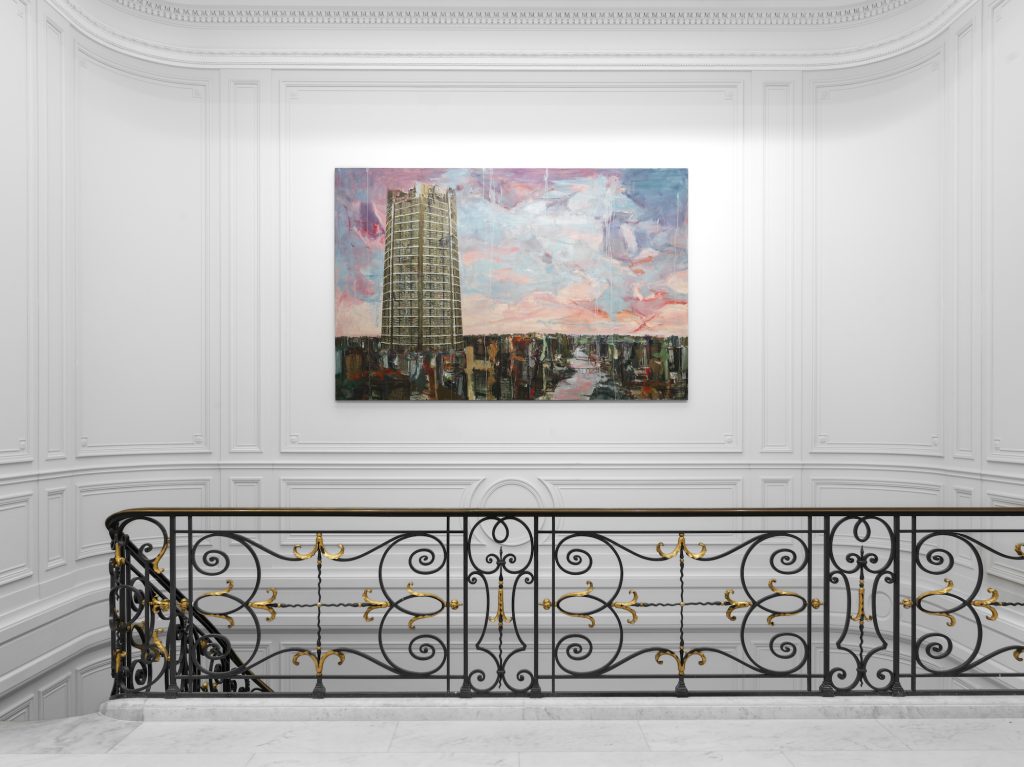
Installation view of Tu Hongtao’s exhibition “Beyond Babel” at Lévy Gorvy Dayan
“I feel the new Tower of Babel is artificial intelligence,” Tu said in an interview with gallery co-founder Brett Gorvy. “Man has advanced technology and the homogeneity of the world and global communication appear to have been restored. But how much longer can the world order and our existing social ecology remain?”
Such reflections stem from Tu’s experiences during the Covid lockdowns in China, which prompted him to question the application of technology in societal control. While such technology emphasizes the precision of converting individuals into digital data, just like AI aims to achieve an ever-higher degree of mimetic accuracy, Tu Hongtao seeks the opposite—an appreciation for ambiguity and uncertainty that remains distinctly human.
For the artist, this poetic uncertainty is where creative freedom lies, and it is also part of the reason that Tu has turned to abstraction.
“Tu Hongtao is a highly trained artist who brings together a deep understanding of traditional picture-making and a powerful gestural expressionism. While proudly Chinese in his identity, he strives for an international language that can be understood universally,” said Gorvy, commenting on Tu’s painting “language.”
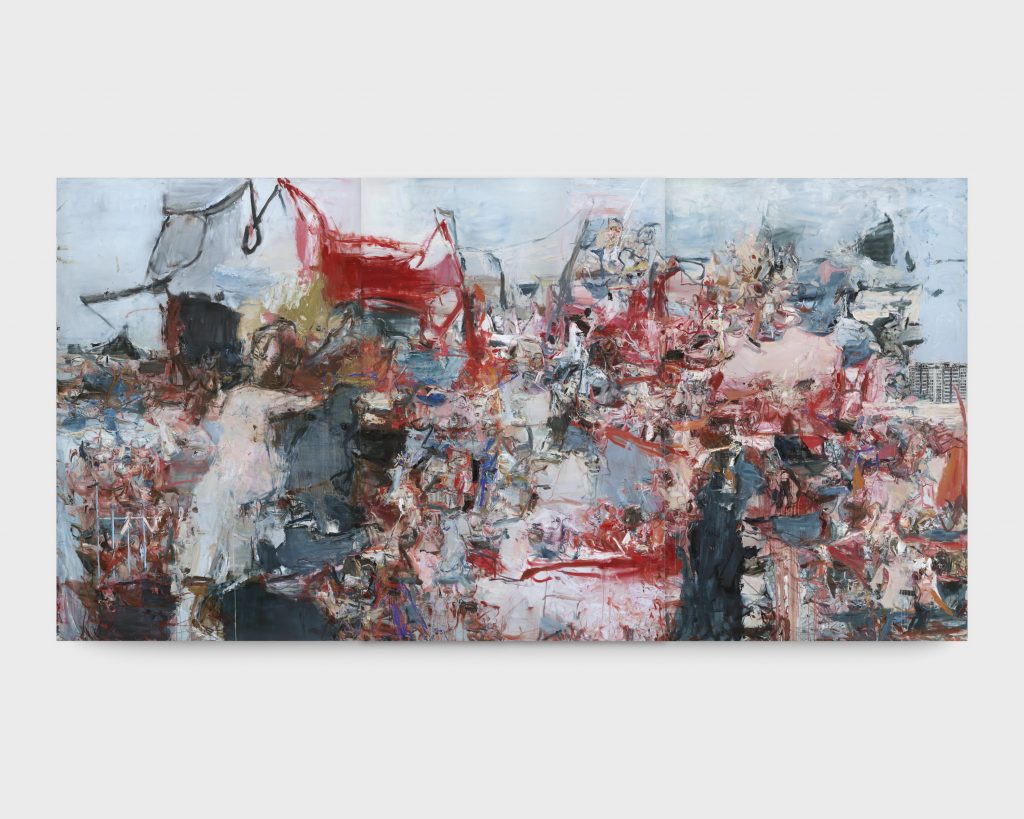
Tu Hongtao, The Corrupted Garden of Eden, 2020-23. Image courtesy of Tu Hongtao Studio and Lévy Gorvy Dayan.
A highlight of the exhibition, the monumental, three-panel composition The Corrupted Garden of Eden (2020-23) reveals the artist’s process, in which he covers an initially figurative composition with layers of gestural lines and colors. This piece, three years in the making, also chronicles Tu’s emotional tumults and creative challenges throughout the pandemic. He nearly abandoned the painting twice. The many sheep that appear are a playful reminder of that period, playing on the homophonic nature of the Chinese word for “sheep” (yáng) and “testing positive.”
As his inaugural exhibition in New York launched, we had a conversation with Tu Hongtao about his latest creations, his reflections on the Covid years, and his outlook on the world.
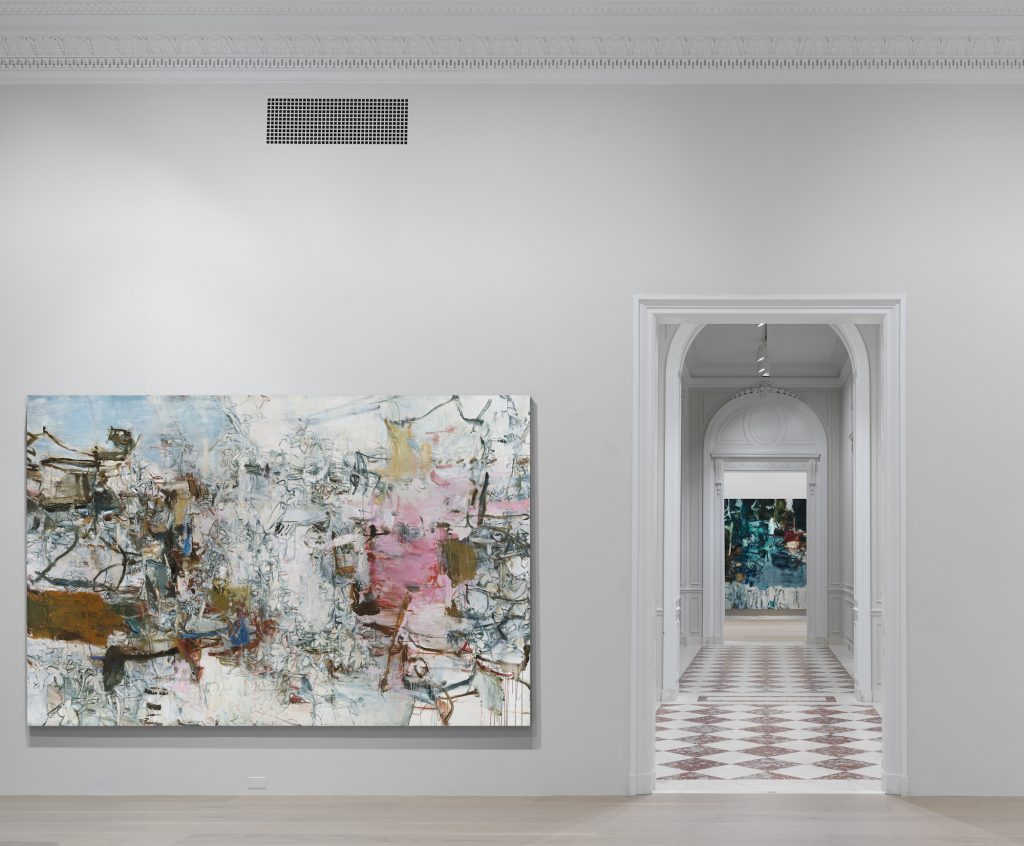
Installation view of Tu Hongtao’s exhibition “Beyond Babel” at Lévy Gorvy Dayan.
How was your experience during the years of the pandemic?
In my city, Chengdu, there were intermittent lockdowns. We had to get vaccinated because without the vaccine, my child couldn’t go to school, and then after attending school for a few days, classes would stop again. In the first two years, people’s values, as well as their emotions, were all somewhat dazed. Starting from the third year, especially in the latter stages of preparing for the exhibition, I felt that people’s vitality was gradually restored. Last October, I chatted with some artists from Nanjing and Beijing, and it seems that everyone was more or less the same. Our values were shrouded in confusion.
During that time, were you able to go to your studio? Did you have the motivation and inspiration to paint?
For nearly two months, I was locked in my studio by myself. Creation came in stages. It was especially apparent with the large painting [The Corrupted Garden of Eden] that took three years to complete. At the beginning, I was very impulsive and painted for two or three months, then suddenly I lost the desire to paint and left it there for half a year before I felt the urge to continue painting. It was like adjusting to a new time zone, sometimes my eyes couldn’t focus. In the second year, I was so angry at one point that I tore the canvas down from the stretcher. Later, I made a new frame and stretched the canvas back onto it before finally finishing the painting. It was a process that happened in stages.
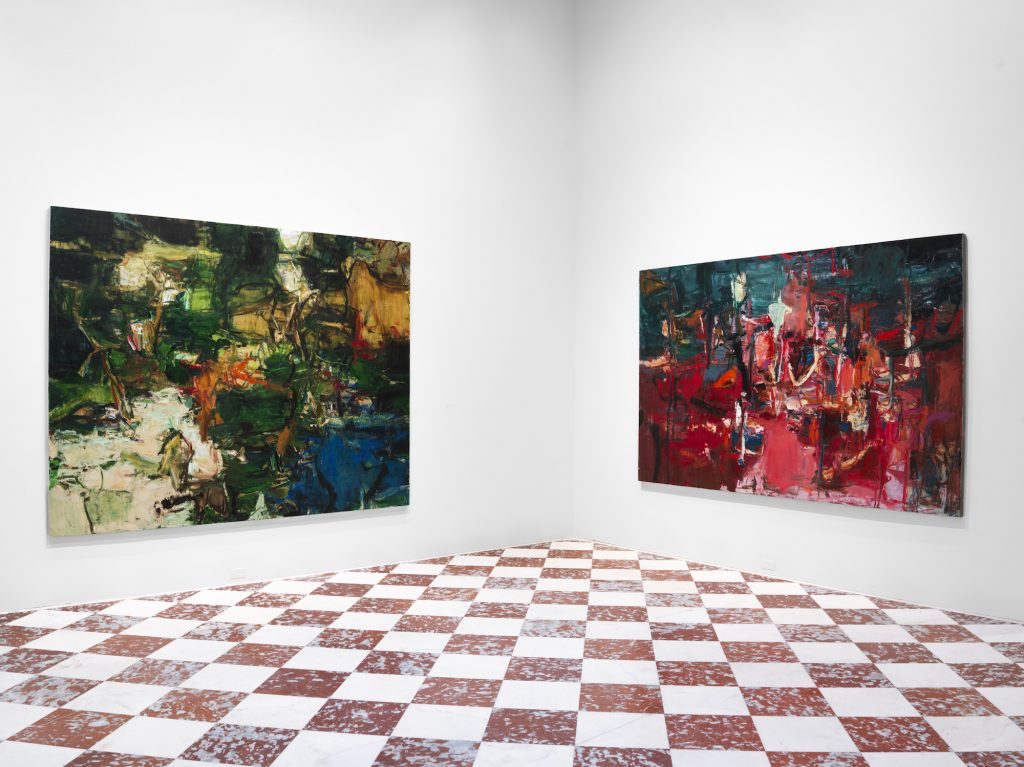
Installation view of Tu Hongtao’s exhibition “Beyond Babel” at Lévy Gorvy Dayan.
Could you tell us more about Babel and how it became the theme that tied the show together?
The Tower of Babel has provoked a lot of thought in me. On the one hand, it represents globalization, as if everyone has a shared dream. But today that dream seems to have collapsed or, rather, torn apart. Reality is moving in the completely opposite direction. On the other hand, the Tower of Babel comes from George Steiner’s book After Babel, in which he questioned the language of technology and consumerism. In the book, Steiner says language has become very much like advertising, losing a lot of its original implications and experiences about humanity. Today, technology is advancing very quickly, and scientism has become a collective Tower of Babel. Steiner felt that language could save the collective unconsciousness of humanity from the turmoil of reality. And I agree with him.
You mentioned that consumerism, including the commercial shaping of language, has been an important theme in your work. Is it still the case?
Before 2010, I would criticize or mock consumerism more directly. Later, I moved beyond it. At that time, consumerism constituted a dilemma in reality, and today I feel that this dilemma might be created instead by technology and technicism. I want to find a more personal visual logic. Influenced by poetry and philosophy, I feel that nonfigurative forms are purer, hence I have gradually moved towards abstraction.
Abstraction is an attitude. AI can do a better job of depicting things. Abstraction, like poetry, is inherently undetermined. Technologies like AI are moving towards certainty; the larger the dataset, the more accurate it becomes, whereas human thought and language are uncertain and infinite. On the surface, abstraction seems vaguer, but in fact, it is more accurate. Like poetry, the mood they create are more fitting, even though it is not precise or quantifiable. In this sense, abstractness is actually more accurate.
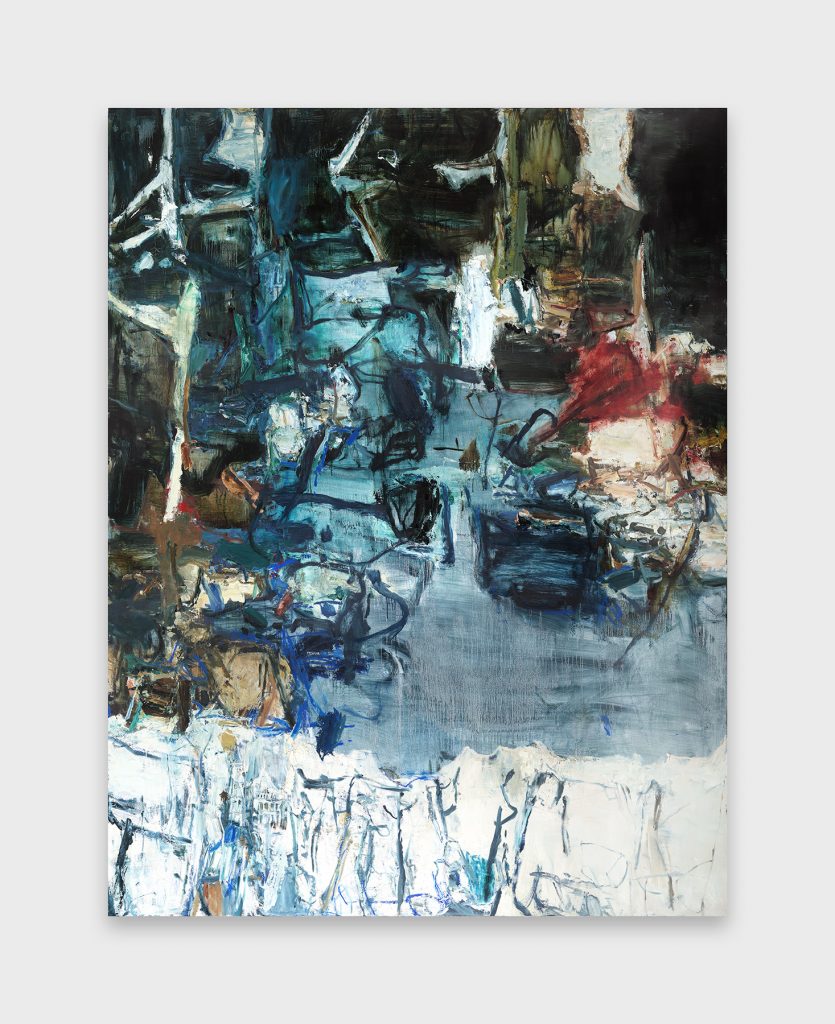
Tu Hongtao, Melancholic Neuschwanstein, 2023. Image courtesy of Tu Hongtao Studio and Lévy Gorvy Dayan.
Is this attitude rooted in an understanding of classical Chinese culture?
I’ve spent a long time studying and understanding classical Chinese culture, as well as being familiar with Western and post-war culture, trying to blend the two. However, overall, I lean more towards the classical and the spiritual. I really have no interest in the materiality that the West often focuses on. Chinese classical culture has its own issues; it later became rigid and closed-off. When the classical spirit encounters today’s realities, having learned and understood a lot about Western art, whether Chinese art can release a new kind of feeling and perspective is a concern and practice of mine.
Are you worried that doing more abstract work will reduce the recognizability of your works?
I’ve been quite confident recently because I’ve found that the rhythm and sense of abstraction of lines are very unique. Western artists might have more experience with light, so they are good at colors and layers. If I were to progress in the direction of color blocks, it would indeed be difficult to truly step out of the contemporary context. I have come to value lines more and more. Especially the paintings upstairs, they are representative of my latest developments. They are powerful and full of energy, and I believe painting as a language can transcend other human languages.